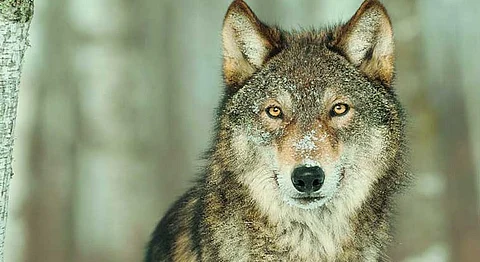
- #HGCREATORS
- #HGEXPLORE
- #HGVOICES
- #HGSHOP
- CAREERS
- ABOUT US
- CONTACT US

A rare sighting of a pack of 10 wolves in Bor, near Wardha district in Maharashtra took environmentalists by surprise, reports Times of India. The pack was sighted on 30th October 2016 by a group consisting of Praveen Pardeshi, Dr. Anish Andheria, President of Wildlife Conservation Trust (WCT) and CCF & field director MS Reddy. The rare sighting occurred in Aamgaon-Navargaon road in the core area of New Bor.

We spoke to Dr. Anish Andheria who was part of the group that sighted the wolves and he revealed that because sightings are so rare, people assume that wolves are almost non-existent, which is not true. Wolves can be found in different parts of India which have scrub forests, semi-evergreen conditions and desert-like conditions, but they are not found in thick jungles. The Indian wolf, is a sub species of the grey wolf, is listed as Least Concern on the IUCN Red List but they have been constantly persecuted locally , and have been extinguished from many parts of their range in India. Hence, wolves are listed on Appendix I of the Wild Life Protection Act that gives it the same status as the tiger in terms of protection offered, says Cara Tejpal of Sanctuary Asia. However, Dr. Andheria comments, “Minimal efforts have been made to conserve wolves because they cannot to be confined to one singular area. Wolves are generally large ranging and a pack will roam in over 2000 sq.km unlike tigers who can be confined easily to a particular location.” He also added that very often wolves have begun depending on humans since their natural prey has reduced considerably. So wolves will begin targeting cattle stock and dogs which are generally found in area with a human population.Ecological damage inflicted by humans have severely diminished the number of wolves in the wild. Commenting on the changes, Dr. Andheria said, “There are four main problems that affect the wolf population, one is linear intrusion which includes building of roads, highways and other structures in their natural habitat. Secondly agriculture disrupts the normal ecological pattern of an area and also introduces new animals such as cattle. Thirdly, the usage of pesticide and other chemicals detrimentally affects the health of these animals. And lastly, the elimination of their natural prey.” He also added that since wolves are now coming into contact with dogs, there can be a cross- spread of diseases which also affects their population significantly.Dr. Andheria stated that the group was travelling to the area in Navargaon since it is being relocated as it falls in the Bor Tiger Reserve which is part of a conservation program. He concluded that the sighting was rare and was his first in his thirty years of being a conservationist.
Feature Image Courtesy of www.IndianExpress.com
